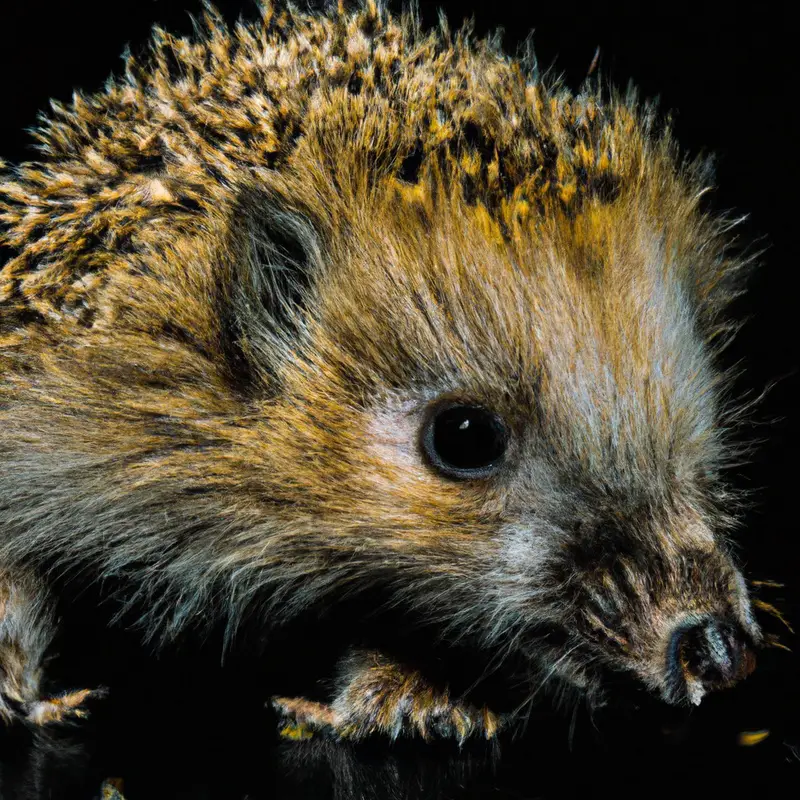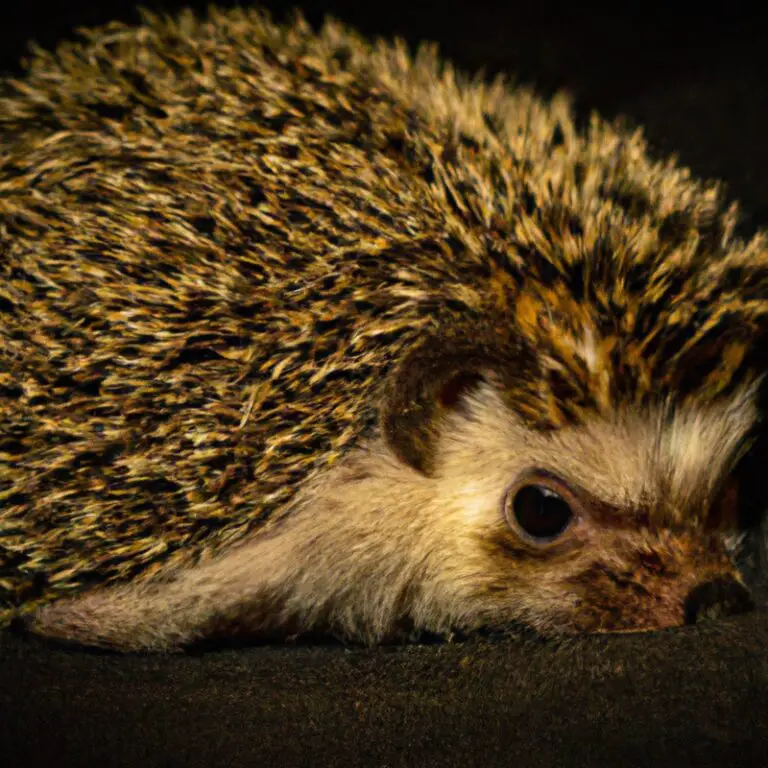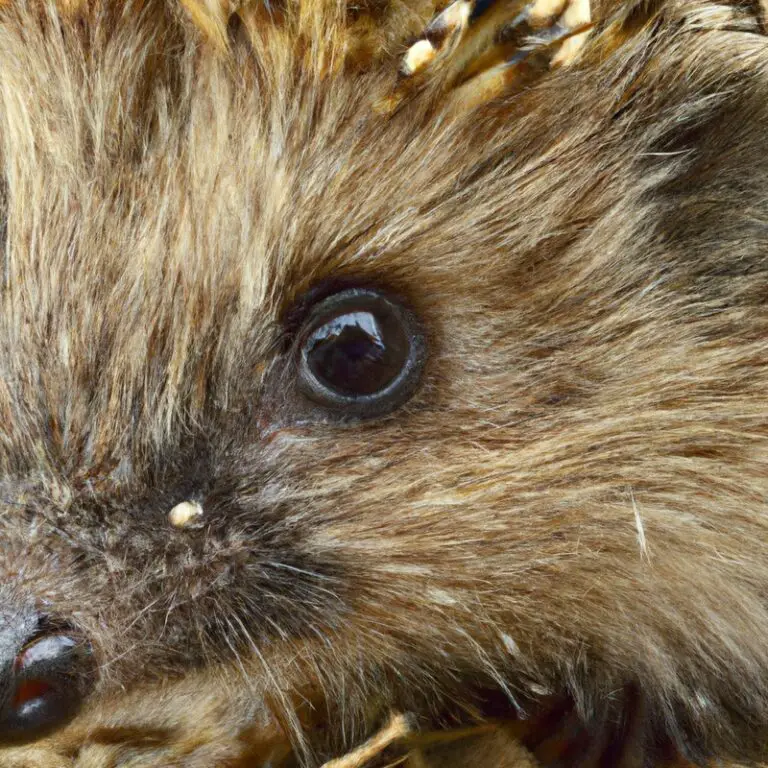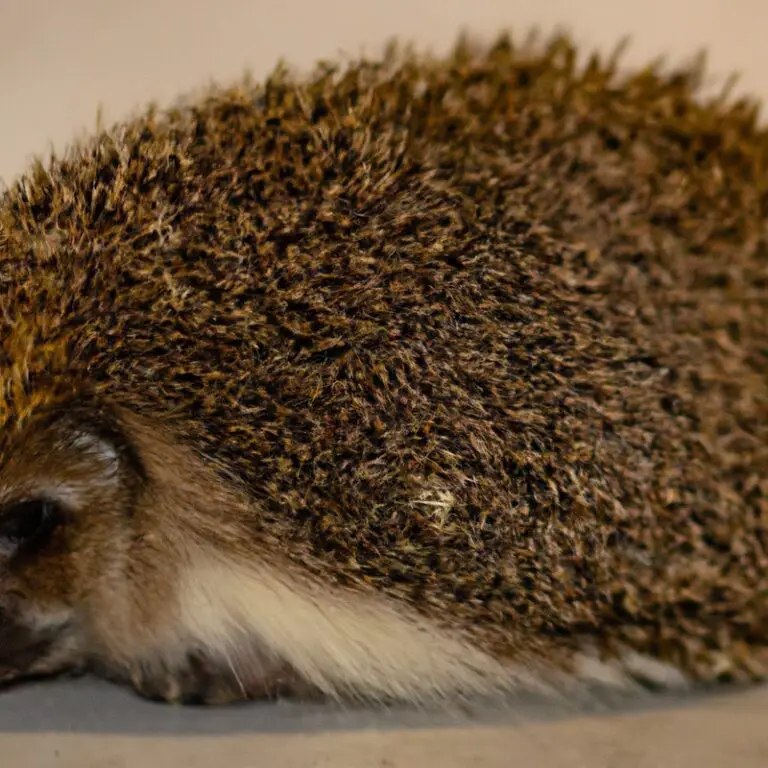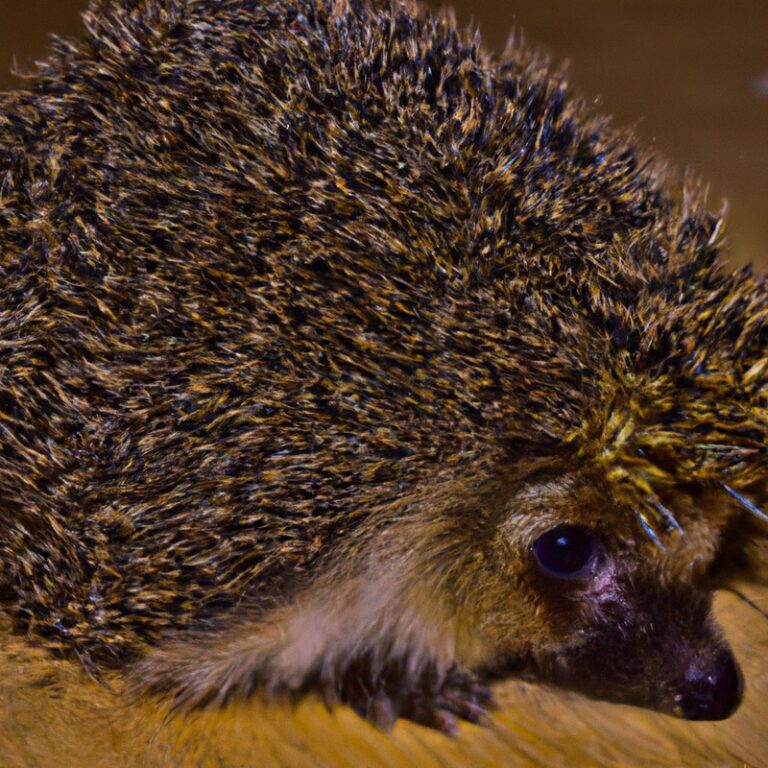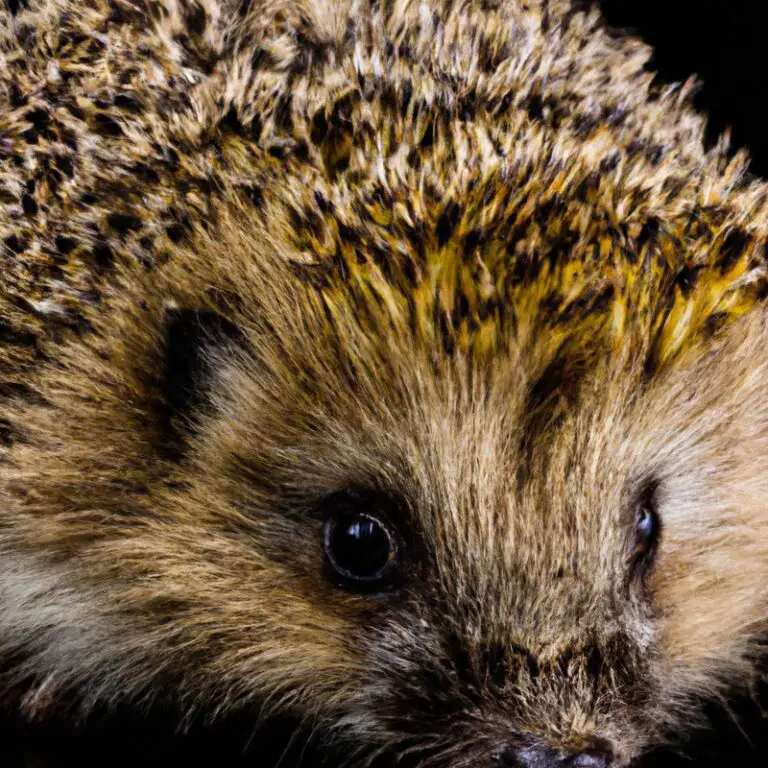What Is The Hedgehog’s Sense Of Smell?
Key Takeaways:
- Hedgehogs have a keen sense of smell that is vital for locating food and detecting predators.
- They use their sense of smell to find insects, fruits, and other sources of nutrition.
- Hedgehogs are able to recognize familiar scents, which helps them navigate their surroundings.
- Their sense of smell also plays a role in social interactions and finding potential mates.
Do you ever wonder how the tiny and adorable hedgehog explores the world around it?
Beyond their prickly exterior, hedgehogs possess a remarkable sense of smell that allows them to navigate their environment, identify potential threats, and find food.
In this blog article, we will dive into the fascinating world of hedgehog olfaction.
We will explore the anatomy of a hedgehog’s nose, how they use their sense of smell for hunting, mate selection, and communication, and the various factors that affect their olfactory capabilities.
Get ready to uncover the secret world of the hedgehog’s sense of smell!
| Hedgehog’s Sense of Smell | Description |
| Smell Sensitivity | Hedgehogs have a keen sense of smell, which they primarily use to find food. |
| Range | Their sense of smell allows them to detect food and potential predators within a range of about 2 meters. |
| Discrimination | Hedgehogs can discern different scents and identify familiar smells, such as their own nest or an associated human caregiver. |
| Foraging | They use their sense of smell to locate insects, worms, fruits, and other food sources while foraging in their habitat. |
| Marking Territories | Hedgehogs also use their sense of smell to mark their territories with scent glands found on their bodies. |
Anatomy of a Hedgehog’s Nose
A hedgehog’s nose has a unique structure that is adapted for its exceptional sense of smell.
Structure of a hedgehog’s nose
The structure of a hedgehog’s nose is uniquely adapted to its environment. It has a pair of nostrils located at the front of its snout, allowing it to sniff out food, predators, and potential mates.
These nostrils are surrounded by spines, which help protect the nose from harm.
Inside the nose, there are scent receptors that enable the hedgehog to detect and analyze a wide range of odors. This intricate nasal structure plays a crucial role in the hedgehog’s sense of smell, helping it navigate its surroundings and find essential resources.
Comparison of hedgehog’s nose with other mammals
The hedgehog’s nose, compared to other mammals, is less developed in terms of smell detection.
While some mammals have highly sensitive noses capable of detecting a wide range of scents, hedgehogs rely more on their other senses, such as touch and hearing, to navigate their surroundings.
This doesn’t mean hedgehogs have no sense of smell at all, but it is not their primary means of gathering information.
Instead, they rely on their acute hearing to detect potential threats or locate prey.
How Does a Hedgehog Use its Sense of Smell?
A hedgehog uses its sense of smell to hunt for food, detect potential threats, communicate with mates, and navigate its environment.
Hint: Hunting, identifying threats, mate selection
Hunting and foraging capabilities
Hedgehogs have impressive hunting and foraging capabilities.
With their keen sense of smell and excellent hearing, they can detect prey such as insects, small animals, and even eggs.
They also use their sharp claws to dig and search for food in the ground.
Hedgehogs are opportunistic hunters, meaning they will explore their surroundings and seize any chance to find a meal.
Their ability to adapt to various environments makes them successful hunters and foragers in the wild.

Identifying potential threats and danger
Hedgehogs have a keen sense of smell that enables them to identify potential threats and danger. They use their nose to detect predators, such as foxes or birds of prey, and even to locate food sources.
Their sense of smell plays a crucial role in helping them navigate their environment and stay safe.
When a hedgehog detects a possible danger, it can curl up into a ball to protect itself. With their powerful sense of smell, hedgehogs are always on high alert, using this skill to stay one step ahead of potential dangers.

Mate selection and communication
Mate selection and communication are vital aspects of hedgehog behavior. Hedgehogs use their sense of smell to detect potential mates.
Males will often wander in search of a female’s scent, hoping to find a suitable partner.
Communication is also important, as hedgehogs use various vocalizations, such as grunting and snorting, to communicate their intentions and establish dominance. Additionally, they use body language to communicate during courtship and mating rituals.
Overall, mate selection and communication play a crucial role in the reproductive success of hedgehogs.
Factors Affecting a Hedgehog’s Sense of Smell
Factors such as weather and environmental conditions, hormones and reproductive cycle, and aging and health conditions can all impact a hedgehog’s sense of smell.
Influence of weather and environmental conditions
Weather and environmental conditions play a significant role in influencing a hedgehog’s sense of smell.
- Temperature: Extreme temperatures, both hot and cold, can affect a hedgehog’s ability to detect scents.
- Humidity: High levels of humidity can impact the transmission of odor molecules, making it difficult for hedgehogs to pick up certain smells.
- Wind: Strong winds can disperse odors, making it challenging for hedgehogs to locate and track scents.
- Pollution: Air pollution can interfere with a hedgehog’s sense of smell, reducing their ability to navigate and identify prey.
- Vegetation: The presence of dense vegetation can both enhance and hinder a hedgehog’s sense of smell, depending on the types of scents present.
By considering these factors, you can better understand and appreciate how weather and environmental conditions can influence a hedgehog’s olfactory abilities.
Role of hormones and reproductive cycle
The reproductive cycle of hedgehogs is influenced by hormones.
These hormones play a crucial role in the hedgehog’s ability to reproduce and engage in mating behavior.
They regulate the timing of the reproductive cycle, including the onset of sexual maturity, breeding activity, and gestation.
Hormones such as estrogen and progesterone are involved in the female hedgehog’s estrous cycle, while testosterone is responsible for the male hedgehog’s reproductive function.
Understanding the role of hormones is essential for breeders and people caring for hedgehogs to ensure proper reproductive health and successful breeding.
Impact of aging and health conditions
The hedgehog’s sense of smell can be affected by both aging and health conditions.
As they age, their olfactory system may become less sensitive, diminishing their ability to detect scents.
Additionally, certain health conditions, such as respiratory issues or nasal congestion, can also impair their sense of smell.
It’s important to monitor their health and provide appropriate care to maintain their smelling abilities.
Regular vet check-ups and a clean and stress-free living environment can help hedgehogs maintain a healthy sense of smell.
Similarities and Differences in the Hedgehog’s Sense of Smell
Hedgehogs have a strong sense of smell similar to other animals, but there are variations in their olfactory abilities among different hedgehog species.
Comparing hedgehog’s sense of smell to other animals
The hedgehog’s sense of smell is not as developed as that of other animals.
Unlike dogs or rodents, hedgehogs rely more on their sense of hearing and touch to navigate their surroundings.
However, they still have a keen sense of smell and use it to locate food and detect predators.
While their sense of smell may not be as strong, hedgehogs compensate with their other senses to survive in their unique environments.
Variations in sense of smell among hedgehog species
Hedgehog species vary in their sense of smell. Some species, like the African pygmy hedgehog, have a highly acute sense of smell that helps them locate food and detect predators.
Other species, such as the European hedgehog, have a less developed sense of smell.
This difference in olfactory ability is likely due to variations in their genetic makeup and evolution. Despite these variations, all hedgehogs rely on their sense of smell to some extent for survival and navigation in their environments.
Training and Enhancing a Hedgehog’s Sense of Smell
To enhance your hedgehog’s sense of smell, try sensory enrichment activities and training techniques.
Importance of sensory enrichment for pet hedgehogs
Pet hedgehogs highly benefit from sensory enrichment, which plays a crucial role in their overall well-being. By providing a stimulating environment, you can enhance their sense of smell and other sensory abilities.
This can be achieved through various means such as introducing new scents, hiding treats for them to find, and providing different textures for them to explore.
Sensory enrichment not only keeps hedgehogs mentally stimulated, but it also helps prevent boredom and promotes their overall health.
Techniques for training a hedgehog’s sense of smell
To train a hedgehog’s sense of smell, there are several techniques you can try.
- Scent discrimination: Introduce different scents to your hedgehog, such as fruits, flowers, or herbs. Encourage them to explore and identify each scent accurately.
- Hide and seek: Hide treats or toys with a strong smell around the hedgehog’s environment. This will motivate them to use their nose to find the hidden items.
- Puzzle toys: Use puzzle toys that require the hedgehog to use their sense of smell to locate treats or rewards. This will stimulate their scenting abilities.
- Scent trails: Create scent trails using food or treats. Start with short trails and gradually increase the length to challenge your hedgehog’s sense of smell.
Remember, patience is key when training a hedgehog. Start with simple exercises and gradually increase the difficulty level.
Happy training!
Interesting Facts and Myths about Hedgehog’s Sense of Smell
Hedgehogs have a keen sense of smell that helps them locate food and avoid danger.
However, some common beliefs about their olfactory abilities are actually myths.
Fascinating facts about hedgehog’s olfactory abilities
Hedgehogs have a remarkable sense of smell that helps them navigate and survive in their environment.
Here are some fascinating facts about their olfactory abilities:
- Hedgehogs have a keen sense of smell that allows them to detect food, predators, and potential mates from a distance.
- Their sense of smell is so developed that they can locate insects and other small prey buried under leaves or in the ground.
- Hedgehogs use their sniffing skills to communicate with other hedgehogs. They leave scent trails to mark their territory and find potential mates.
- Interestingly, hedgehogs have a specialized organ called the Jacobson’s organ that helps them detect and analyze pheromones in the air.
- Their sense of smell also plays a crucial role in helping them find suitable nesting sites and avoid danger.
Overall, hedgehogs’ olfactory abilities are truly fascinating, allowing them to navigate their surroundings, find food, communicate, and ensure their survival in the wild.
Frequently Asked Questions about Hedgehog’s Sense of Smell
How far can a hedgehog smell?
A hedgehog’s sense of smell is impressive! They can smell food and detect predators from a considerable distance.
In fact, a hedgehog can smell things up to a mile away.
Their sense of smell is crucial for finding food and staying safe in their environment.
With their acute sense of smell, hedgehogs can navigate their surroundings and locate sources of food, even in the dark.
It’s fascinating how their noses play such a vital role in their everyday lives.
Can hedgehogs smell their food underwater?
Hedgehogs cannot smell their food underwater. While they have a keen sense of smell on land, their olfactory abilities do not work underwater.
Hedgehogs primarily rely on their sense of smell to locate food, so being underwater limits their ability to find and identify it.
They mainly use their sense of touch to explore their surroundings when submerged, rather than relying on their sense of smell.
Is a hedgehog’s sense of smell better than its other senses?
A hedgehog’s sense of smell is not necessarily better than its other senses, but it is highly important for their survival. Hedgehogs rely on their sense of smell to find food, navigate their surroundings, and locate potential mates.
However, they also have well-developed senses of touch and hearing, which are crucial for their survival.
While their sense of smell is vital, it works in conjunction with their other senses to help them thrive in their environment.
Final Verdict
The hedgehog’s sense of smell is an essential tool that helps them navigate and interact with their environment. Their noses are specially adapted to detect prey, identify potential threats, and communicate with other hedgehogs.
Factors such as weather, hormones, and health can affect their olfactory abilities.
While their sense of smell is remarkable, it is not superior to their other senses. By providing sensory enrichment and using training techniques, we can enhance their olfactory capabilities.
Understanding the intricacies of a hedgehog’s sense of smell allows us to better care for these fascinating creatures and appreciate their unique abilities.

